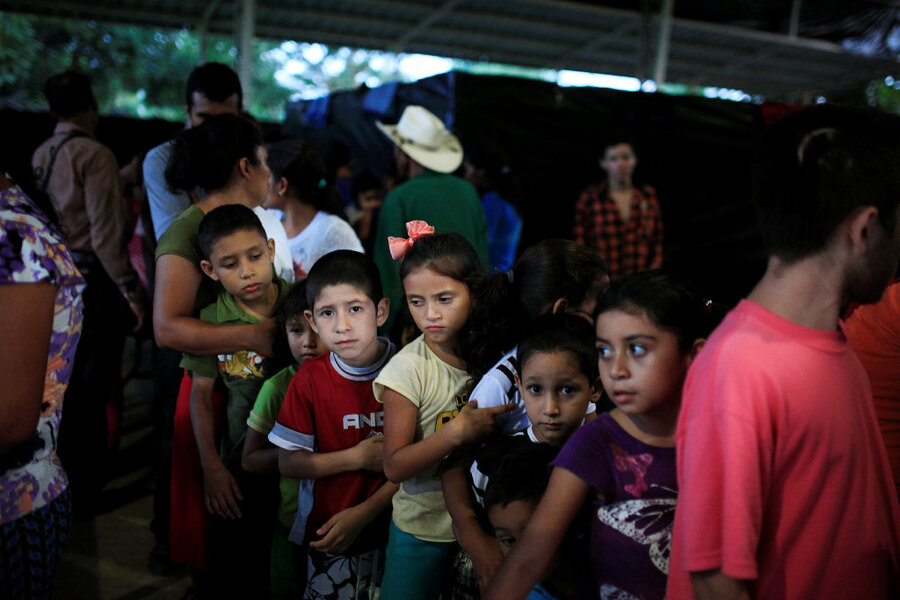Why Trump can’t ignore Central America
Loading...
When President Trump came into office, a full-scale border wall seemed like such a simple solution to his supporters who wanted to end the flow of migrants from the south. Lately, however, the administration has been forced to address the root causes of the crisis, starting with extreme poverty and turmoil in Central America.
The top concerns for the administration are Guatemala, Honduras, and El Salvador, where an estimated 150,000 people have fled to the United States since the start of 2018. If the US doesn’t resolve issues in those countries, said Secretary of State Mike Pompeo last week, “we’re going to have challenges along our southern border for years and years to come.”
In addition, the administration has tried to influence events in Nicaragua, which has seen antigovernment protests for three months. With more than 200 people killed, the US placed sanctions on three senior Nicaraguan officials on Thursday. The US “will not stand by idly in the face of the abuses taking place in Nicaragua,” an administration official said.
The Trump administration also promised $10 million in aid last month to assist countries such as Colombia in absorbing tens of thousands of people fleeing hunger and suppression in Venezuela.
One new worry for the US is a promise by Mexico’s incoming president, Andrés Manuel López Obrador, to end a US-supported program that curbs the flow of Central Americans over the southern border of Mexico. He has said Mexico should not do the “dirty work” for the US and instead will focus on the welfare of “our immigrants” in the US.
Such developments led Vice President Mike Pence to travel to Central America in June and make this plea directly to the people in the region:
“Build your lives in your homes, and know that the people of the United States of America will keep working every day for a brighter future our people and people all across this new world. The truth is, we are bound together as friends in this hemisphere of freedom and a hemisphere of faith.”
The heart of the US debate over Central America is the level of foreign aid to the region. Funding has fallen in the past two fiscal years, from $750 million in 2016 to $615 million in 2018, while Congress seems poised to decrease it even further to less than $600 million. Many lawmakers want the administration to ensure that US money is better spent in Honduras, Guatemala, and El Salvador – the so-called Northern Triangle of Central America.
This decline in US support for the region is in contrast to moves by the European Union to increase aid for African countries that are the main source of migrants flowing into Europe. The problems in both Central America and much of Africa can seem immense. But as both the EU and US have discovered, the problems cannot be ignored. In fact, the costs of aiding such countries could be less than the cost of beefing up border security.
Open hearts toward the southern neighbors of the US might do better than higher and longer walls along the US border.







